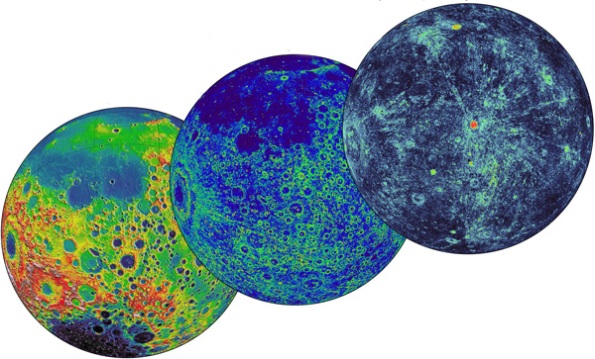Archive
That Was the Week that Was, March 14-18, 2011. . . Best of Goddard People, Science, & Media and the blogpodcastotwittersphere
Japan Earthquake
After the March 12 earthquake and tsunami in Japan, it’s as if the world collectively gasped — and then what followed was almost a feeling of disbelief as the harsh facts begin to register. Entire seaside communities erased from existence. . . tens of thousands of lives feared lost. . . giant ocean swells flooding the coastline. . . cars and houses looking like toys bobbing in the water. And then there are the satellite images, which provide a critical wide-angle perspective.
NASA’s Earth-observing fleet has helped to reveal the full scope and power of the catastrophe. As Mark Imhoff, the Terra satellite project scientist at Goddard, said in a report by West Virginia Public Broadcasting:
“It’s been heart wrenching seeing some of these images because the first set images that we got in on the day after the earthquake on March 12, even though the resolution from of the satellite wasn’t very good, the data from the Miser instrument at Jet Propulsion’s Laboratory showed that there were a large area of coastline that really weren’t there anymore and so you could really get an impression that a lot of villages and agricultural areas had really been severely impacted by the ocean.”
NASA released a web feature on March 17, five days after the quake, showing tsunami after-effects documented by Landsat 7.
NASA Earth Observatory has compiled a gallery of earthquake-related images from various NASA spacecraft, including EO-1, Terra, Aqua, and astronaut photos from the International Space Station.
As usual, EO’s in-depth captions provide context and explanations for the various destructive effects of the earthquake on coastal Japan. An even larger selection of imagery is available in this NASA web feature about the disaster.

New LRO Data
On March 15, the Lunar Reconnaissance Orbiter mission released the final set of data from the mission’s exploration phase, along with the first measurements from its new life as a science satellite. The press release explains the details. The slideshow below takes a look back at some of the coolest imagery from the mission so far. All the images in the slideshow, and many more, are archived here on the NASA LRO website, which includes detailed captions.
Messenger Makes It
The third major story out of Goddard this week was the arrival in Mercury orbit of the Messenger spacecraft. After three spectacular fly-bys earlier (see slideshow below), Messenger is now in position to really dig into its science mission to reveal the nature and history of the first rock from the sun. An earlier post discusses some of the research being conducted on Mercury’s thin “exosphere” of atoms and ions wispily clinging within the planet’s gravity.
_____________________________________________________________________________________________________
OH AND DID I MENTION? All opinions and opinionlike objects in this blog are mine alone and NOT those of NASA or Goddard Space Flight Center. And while we’re at it, links to websites posted on this blog do not imply endorsement of those websites by NASA.
//
</p> <div><a href=”http://www.w3counter.com” mce_href=”http://www.w3counter.com”><img src=”http://www.w3counter.com/tracker.php?id=39986″ mce_src=”http://www.w3counter.com/tracker.php?id=39986″ style=”border: 0″ mce_style=”border: 0″ alt=”W3Counter” /></a></div> <p>
Night owls: meet the duo of amateur astronomers in Japan who discovered the star that delivered a "shocking surprise" to NASA's Fermi Gamma-ray Space Telescope
On March 11, 2010, the evening skies were clear over the town of Miyaki in Saga Prefecture on the island of Kyūshū, Japan. Two elderly stargazers, though comfortably retired from their jobs, were just getting to work in their Miyaki Argenteus Observatory.
All night, Koichi Nishiyama, 72, snapped pictures of the sky through the barrel of a 16-inch-wide reflecting telescope. His observing partner, Fujio Kabashima, 70, used computer software to compare the images with shots of the same patches of sky taken on previous nights.
In the pre-dawn hours, Nishiyama and Kabashima finally nabbed themselves a nova — the sudden, short-lived, and dramatic brightening of a formerly inconspicuous star. This particular star, V407 Cyg, lies about 9,000 light-years from Earth in the constellation Cygnus the Swan. Nishiyama and Kabashima determined that V407 Cyg had flared to 10 times its former brightness.
The amateurs reported the observation to astronomer Hiroyuki Maehara at Kyoto University, who notified his colleagues around the world so they could organize follow-up observations. Three other Japanese observers — Tadashi Kojima, Kazuo Sakaniwa and Akihiko Tago — reported the same nova the next day, March 11.
 On March 11, NASA’s Fermi Gamma-ray Space Telescope started picking up gamma rays streaming from a new source in Cygnus, which turned out to be V407 Cyg. This was totally unexpected and out of character for a nova. It’s the topic of a major press release from Goddard today and the subject of an electronic publication in the journal Science. (Actually, Nishiyama and Kabashima are co-authors on the Science paper.)
On March 11, NASA’s Fermi Gamma-ray Space Telescope started picking up gamma rays streaming from a new source in Cygnus, which turned out to be V407 Cyg. This was totally unexpected and out of character for a nova. It’s the topic of a major press release from Goddard today and the subject of an electronic publication in the journal Science. (Actually, Nishiyama and Kabashima are co-authors on the Science paper.)

Fermi's Large Area Telescope saw no sign of a nova in 19 days of data prior to March 10 (left), but the eruption is obvious in data from the following 19 days (right). The images show the rate of gamma rays with energies greater than 100 million electron volts (100 MeV); brighter colors indicate higher rates. Credit: NASA/DOE/Fermi LAT Collaboration
Sky lovers
The Fermi discovery is a perfect moment to celebrate hard-working amateur observers around the world like Nishiyama and Kabashima. These folks make significant and valuable contributions to astronomy every day.
So let’s give these sleepless gentlemen from Saga Prefecture their nova-nabbing props, and in their own words. Special thanks to Hiromitsu Takahashi of Hiroshima University for relaying my questions by email to Nishiyama and Kabashima and translating their responses.
gogblog: To date, how many novae and or other objects you have spotted and reported officially?
Nishiyama & Kabashima: “We started observations on August 1st 2007. Up to now, we have discovered 53 novae and one supernova (SN2009ls, on November 26, 2009). Of the novae, 13 are galactic and 40 extragalactic.”
Just a quick pause for the science literacy cause: “Galactic” refers to novae in our Milky Way Galaxy. “Extragalactic” means it happened in other galaxies.
And let’s be clear about another thing: Spotting 53 novae in three years is an extraordinary achievement for any human observer. In 2008, they discovered five in a single year, tying the record set in 1991 by Australian Paul Camilleri. In March 2008, the pair received a special award for their achievements from the Astronomical Society of Japan.
What better person to put it in perspective than astronomy author Stephen James O’Meara, one of the most celebrated amateur observers in the business.
“Nova hunters are a dedicated group of amateur astronomers who demonstrate infinite patience,” Steve says. “What does seem to stand out about Nishiyama and Kabashima’s success is its magnitude. Most nova hunters spend years searching before they find one. Bill Liller (in Chile), for instance, has been searching in earnest, I believe, since the mid-1980s. Yet Nishiyama and Kabashima have nearly tied him in galactic nova discoveries in only three years time! That’s almost unheard of. It means that either their observing conditions are exceptional or that they are exceptionally fortunate when they do have clear skies to nab most of the few novae that occur briefly in the Northern skies each year.”

Japanese amateur astronomers discovered Nova Cygni 2010 in an image taken on March 10 (4:08 a.m. Japan Standard Time, March 11). The erupting star (in center of circles) was 10 times brighter than in an image taken several days earlier. Credit: K. Nishiyama and F. Kabashima/H. Maehara, Kyoto Univ.
And it’s not like Nishiyama and Kabashima don’t have any competition. . .
gogblog: How many other amateur observers in Japan are doing this kind of work?
Nishiyama & Kabashima: “There are about 50 amateurs searching for supernovae in Japan. Among them, the number of the people who have really discovered them (and are still observing actively) is about 10. In the case of novae, because the observation requires relatively simple equipment, many more people are searching. However, the number of the discoverers is similar to that of the supernovae (about 10).”
gogblog: Is there friendly competition between the observers to be the first to discover new objects?
Nishiyama & Kabashima: “Yes. We think all the observers are not only rivals but also friends. Actually, we send/receive emails very frequently with some of them — for example, Hideo Nishimura in Kakekawa city, Shizuoka prefecture, who has discovered the same number of galactic novae as us. Also, Koichi Itagaki in Yamagata city, Yamagata prefecture, who is one of the leading discoverers of supernovae.”
Despite getting through many nights on just three hours of sleep, Nishiyama and Kabashima appear to have inexhaustible enthusiasm for nova hunting. This is not really surprising, considering that the word “amateur” is French for “lover of,” ultimately derived from the Latin for “lover.”
gogblog: After discovering so many objects, what motivates you to continue? What holds your interest about this work?
Nishiyama & Kabashima: “Following our discoveries, many researchers take the spectra and study them. Some of them contact us to ask for more information or to give feedback, such as confirmation of the brightening. Therefore, we understand our activities are helpful for the research of astronomy and astrophysics. It’s our motivation. We really hope that our discoveries are useful for the research. We try to observe the sky every night with little sleep if the weather is fine.”
_____________________________________________________________________________________________________
OH AND DID I MENTION? All opinions and opinionlike objects in this blog are mine alone and NOT those of NASA or Goddard Space Flight Center. And while we’re at it, links to websites posted on this blog do not imply endorsement of those websites by NASA.
//
</p> <div><a href=”http://www.w3counter.com” mce_href=”http://www.w3counter.com”><img src=”http://w3counter.com/tracker.php?id=39986″ mce_src=”http://w3counter.com/tracker.php?id=39986″ style=”border: 0″ mce_style=”border: 0″ alt=”W3Counter” /></a></div> <p>

